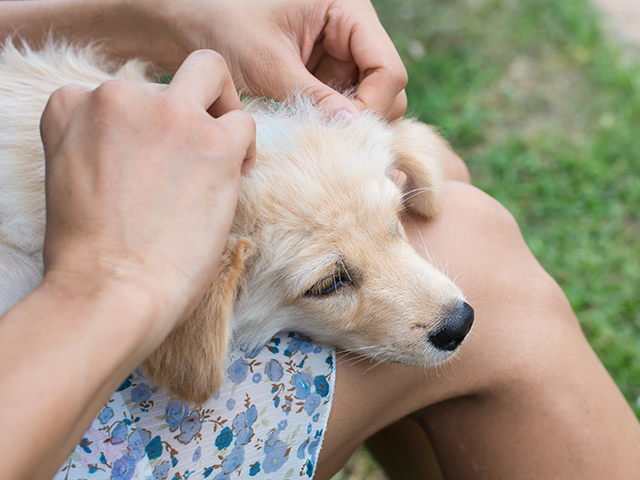 There are good ticks and bad ticks in this world. Good ticks are the ones you get for answering a question right. Bad ticks are a type of parasite that can make your pet very ill. It is this second sort of tick that pet owners need to be aware of, particularly as we approach summer and start planning for holidays. So, what are they, what is the problem, and what can you do about it?
There are good ticks and bad ticks in this world. Good ticks are the ones you get for answering a question right. Bad ticks are a type of parasite that can make your pet very ill. It is this second sort of tick that pet owners need to be aware of, particularly as we approach summer and start planning for holidays. So, what are they, what is the problem, and what can you do about it?
Firstly- what exactly are ticks?
Ticks are small parasites, normally less than 1cm in size. They have eight legs (like mites and spiders) and they feed on the blood of animals- including cats, dogs, and people. Australia has many native tick species, but the one of biggest concern for pets in the ACT/ NSW is the paralysis tick Ixodes holocyclus. This tick is found along the east coast of Australia, normally in bushland or areas with long grass/ scrub.
The problem with paralysis ticks
When paralysis ticks feed, they secrete a toxin into their host’s blood stream. This toxin interferes with communication between nerves and muscles. It can take some time for symptoms to develop after a paralysis tick attaches, but once the toxin starts to act animals can become ill (and even die) very rapidly.
What are the symptoms of tick paralysis?
Early symptoms of tick paralysis include a change or loss of bark/meow, vomiting, and weakness in the back legs. As time goes on, weakness starts to affect the front legs too, and animals become unable to stand. Once the respiratory muscles are affected animals will start to pant, cough, and have difficulty breathing.
How can I keep my pet safe?
As the saying goes, prevention is better than cure. There are many reliable tick preventative medications available, including spot-on treatments, chewable tablets, and tick collars. It is best to talk to your regular vet about what they recommend, and to make reminders for yourself to ensure that treatments are given according to their recommended schedule. In addition to preventative medications, there are some other simple measures you can take, including limiting pet access to long grass/ scrub/ bushland; avoiding close contact with native wildlife (who can carry ticks); and keeping grass short and gardens well maintained. Finally, it is always good practice to perform a tick search on your pet each day.
How to perform a tick search
A tick search is a manual check for ticks on your pet. It involves systemically running your fingers over your pet’s coat/ body, feeling for any lumps or bumps that could be a tick’s body. Use gentle pressure, and move your fingers in small circles as you work from nose to tail. Most ticks attach around the front of the body, so pay extra attention to the head and neck, and remember to check in the ears and between the toes as well.
What should I do if I find a tick?
If you find a tick then it should be removed immediately. You can purchase tick removal devices (hooks/ twisters/ keys) for a small amount. Alternatively, grasp the tick at skin level using tweezers and pull steadily, ensuring you remove all the head/ mouthparts so they do not cause infection. Keep the tick in a jar or ziplock bag. Pets can still develop symptoms after tick removal, and having a specimen will allow your vet to identify the tick species.
How is tick paralysis treated?
If your pet shows signs of tick paralysis you should take them straight to a vet. Tick paralysis can be treated with an anti-toxin, but treatment does not necessarily reverse all the symptoms and many pets need supportive care (fluids, oxygen, and medications) to help them recover. Any delay in treatment can be fatal.
Disclaimer: The information and advice in this post is general in nature. It is not intended as a substitute for tailored health care advice from your regular veterinarian.
